

CLARK, Harry
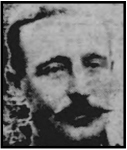
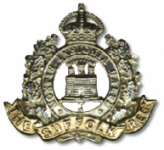
No. 3/9827, Company Sgt Major, Henry CLARKE
Aged 40

7th Battalion, Suffolk Regiment
Killed in Action on Thursday 12th October 1916
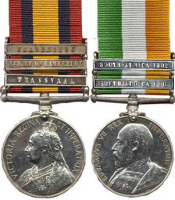
Queen's South Africa medal and King's South Africa medal
with clasps
Transvaal-Relief of Kimberley-Paardeberg......South Africa 1901 and South Africa 1902
|
He gives his Mother as Emma and his grandfather as Abraham which could be Abraham and Harriet Clarke and their daughters Emma [21] and
Mary A [14] at Shelley Road, Layham, nr Hadleigh in the 1871 census. His birth registration has yet to be found (comounded by the fact that we do not know if he was GARROD, or CLARKE.
1881 census...Aged 2, Harry GARROD, born London, he was at Layham with his widower grandfather Abraham CLARKE [58] brickmaker born Hadleigh, cousin ? Kate [15] born Hadleigh. 1891 census...Aged 12, he was at Shelley Road, Layham with his grandfather Abraham CLARKE [67] bricklayer born Hadleigh; his grandmother Emma [57] (Abraham's 2nd wife) 1901 census...Aged 24 he was at Barracks Chateau a l'Etoc, Alderney. 1911 census...Aged 34, he was a Colour Sergeant in the Suffolk Regiment at Barracks, Bury St Edmunds, Suffolk Regiment Barracks His legatee and executer was Samuel PERCY, presumably his fiancée's father |
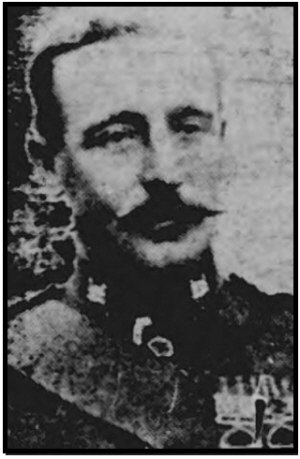
He enlisted in the Suffolk Regiment (# 3906) on 9th August 1894, giving his age as 18 yrs 1 month (putting his birth about July 1876) and from Hadleigh, Suffolk,
occupation, tinman. He was already in the militia. He was only 5' 3.5" ( 161.9 cm)tall, 120 lbs (54.6 kg) in weight with chest
34.5" to 38" (87.6 to 96.5 cm). His military history papers show his family as Mother, Emma Clarke, address unknown - father Abraham dead - grandfather Abraham Clarke of
Hadleigh Suffolk.
Enlisted 9-8-1894, he reached substantive Corporal on 21-12-1898 but at his own request reverted to Private on 10-6-1900. He was however promoted again on
14-10-1900. Seconded to the Mounted Infantry in South Africa on 30-19-1901, he took a bounty of £10 on 16-2-1902 to extend his service to 12 years. Then
whilst in India at Karachi on 9-12-1903 he took another bounty of £21 to extend his service to 21 years. In the event he requested and was granted discharge
after 18 years on 22-11-1912
His movement summary follows:
Home 9th Aug 1894 to 9th April 1897....................Malta 10th April 1897 to 11th Jan.1899
Home 12th Jan.1899 to 22nd Oct.1899....................South Africa 23rd Oct.1899 to 4th June 1900
Home 5th June 1900 to 29th Sept.1901..this was when he was stationed in Alderney (1901 census)
South Africa 30th Sept.1910 to 21st Sept.1902..........India 22nd Sept. 1902 to 27th Dec.1907
Home 28th Dec.1907 to 22nd November 1912 when he was discharged as Colour Sergeant, having been at Barracks in Bury St Edmunds for the 1911 census. He gave
as his intended address on discharge the Unionist Club, Exning, nr Newmarket Suffolk. His references refer to his having worked in the Officers Mess whilst
in India so he possibly was intending to work at the Club. It is not known when he re-enlisted for the 1914-18 war, but having served 18 years he would not
have been on the Reserves, indicating a voluntary return to the Colours
He had been captured at some time whilst in the 1st Battalion Suffolk Regt, serving with the 29 Battalion Mounted Infantry during the Boer War and was
released on 31st March 1902 as follows:-
Boschbult, a farm in the South African Republic (Delareyville district: North West), 20 km south-east of Delareyville. On 31 March 1902, Damant's Horse, part of
Lt-Col G.A. Cookson's column, whilst reconnoitring along the Brak Spruit, came in contact with a convoy of burghers under the command of Asst Cmdt-Gen J.H.
de la Rey at Boschpan* and followed it onto Boschbult farm. Here superior Boer forces attacked the column which managed to hang on and entrench before the
Boers retired at nightfall.

|
The 7th Suffolks had been given their orders for the battle of Transloy, then were ordered to take part in the attack on Bayonet Trench and Luisenhof Farm.
Overnight they were heavily shelled until they moved to their assembly trenches just before dawn.Company headquarters were all in a dugout in a sunken road
leading to Gueudecourt Wood. After a reasonably quiet morning they set off at 2 pm in the open, where they were subject to very heavy cross fire of every
description, mainly though from machine guns and automatic rifles. Close to the German trenches the attack was held up by machine gun nests and barbed
wire, and the waves, unable to go further, lay down. Then remarkable gallantry was shown by several officers and men. This was a calamitous day for the
Suffolk Regiment with over 500 casualties.All of the officers became casualties. 11 Officers and 111 men were killed. Co-incidentally this was the same day that Lt. Alec Pearmain KING died in Chippenham in a shooting accident whilst on convalescent leave from the 12th battalion This man caused some problems connecting him with Exning, but luckily it was spotted that a pencilled entry on one Army form gave his intended address on release was Exning. This was further confirmed when in the death notices in the Bury Free Press of 4th November 1916 was an entry:- "CLARKE - Killed in action, on October 12th, 1916 in France, Company Sergt-Major H.G.Clarke, 7th Batt., Suffolk Regt. late of Conservative Club, Exning, then on December 2nd 1916, a fuller description of his death in the Bury Free Press:- POPULAR SERGEANT MAJOR KILLED It is with regret that we record the death of a gallant and popular Co.Sergt-Major, of the 7th Suffolks. The deceased soldier, Co.Sergt-Major H.Clarke fell in action on Oct.12th last. He possessed a fine, lengthy record of military service, and on more than one occasion he proved himself a brave and fearless soldier. Co,.Sergt-Major Clarke joined the Suffolks at Bury Depot when a lad. He went through the South African War, for which campaign he had the distinction of being awarded two medals. After serving his time he retired from the Army with a pension and for a period of three years he held the position of Steward of the Exning Conservative Club. He was called up again for service at the beginning of the war, and went out to France with the 7th Suffolks. Just before last Christmas he was wounded and sent to a hospital in England. After his recovery he returned to France, and fell in action on October 12th. He had many friends in Bury, to whom he was familiarly known as "NobbY", all of whom heard of his death with deep regret. Much sympathy is felt for Miss Percy of Bury St.Edmunds, to whom C.Sergt-Major Clarke was engaged. |
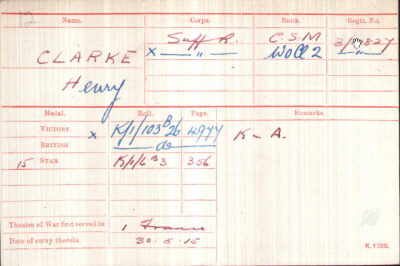
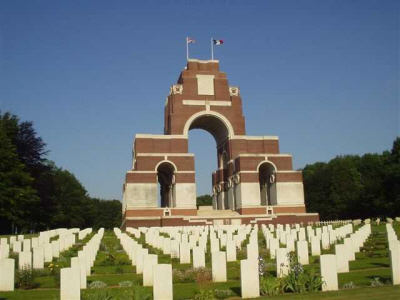
click here to go to the Commonwealth War Graves Commission website for full cemetery/memorial details